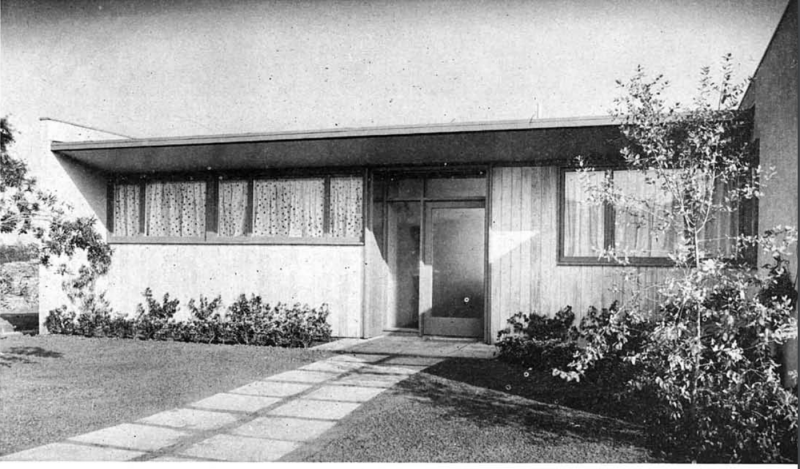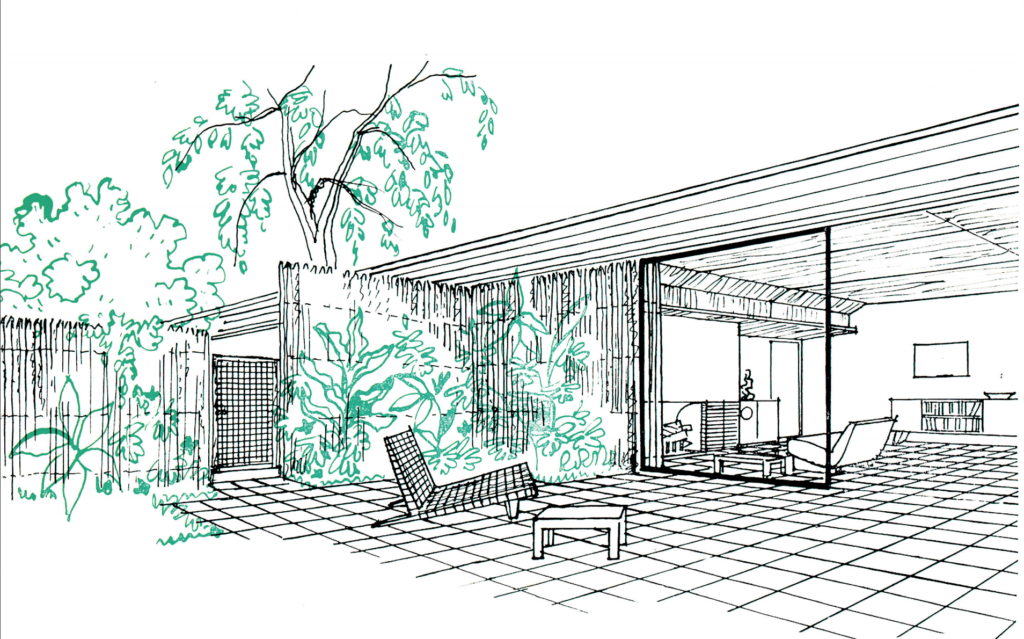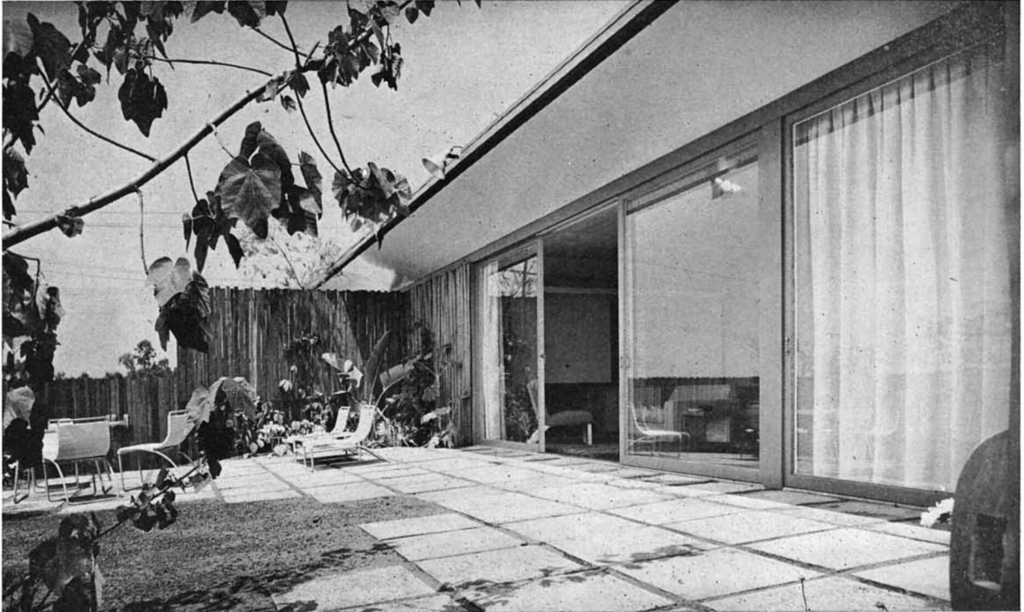
The Case Study Houses were and are an illustration of modernism’s intended audience—the masses. These homes were intended to change the way we look at residential design and forever alter the way we live. Built or unfinished, preserved or lost, join us as we take a closer look at each of the iconic designs that carry the name “Case Study House.” In this installment, we look at house #11.
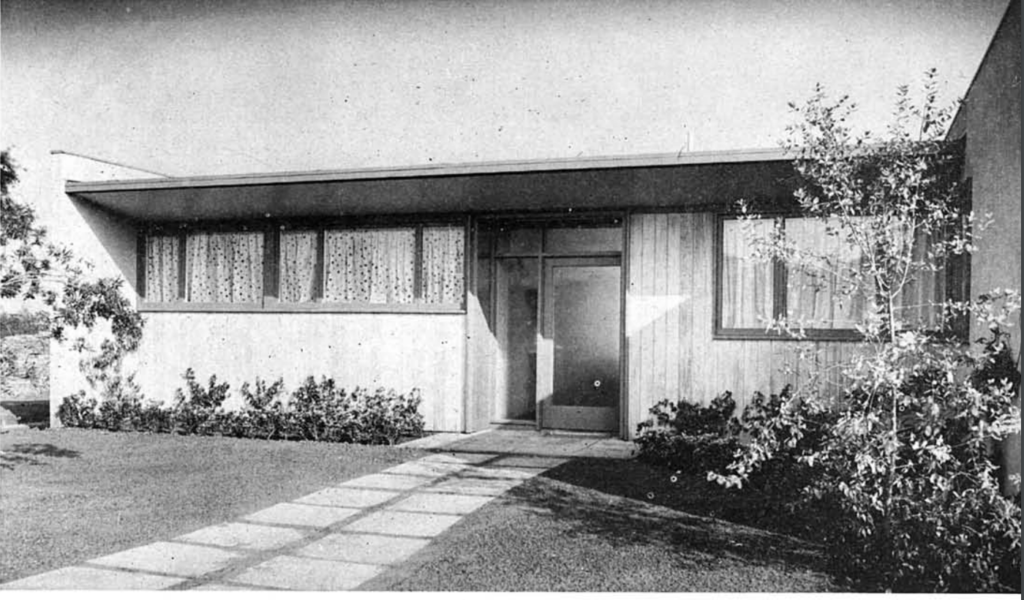
Meet House #11
Located in West Los Angeles, CSH #11 was designed by Julius Ralph Davidson (J. R. Davidson). Davidson was born in Berlin and began his career there as a draughtsman. He later worked in London and moved to Los Angeles in 1923. He also designed case study houses number 1 and 15. The project was envisioned to be a modest yet efficient home, 1250 sq ft, built for a couple with a teenager.
The house was completed but there were delays due to shortages after WWII. “The design and construction were carried out under the extreme difficulties of critical material shortages and the unpredictable circumstances of recent and alas, of current days,” states the July 1946 Arts & Architecture article. The home has since been demolished.
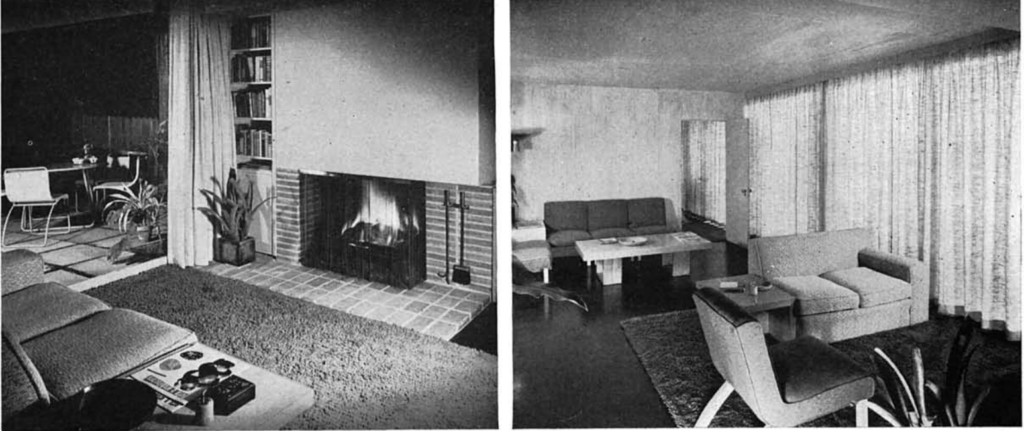
Layout
This home was built to be compact and efficient, starting with the orientation and placement of the house on the lot which allowed direct access from road to garage to the working areas of the home (kitchen and utility room). To avoid unnecessary cross-traffic through the living room, inter-room circulation was well-planned ahead of time.
The guest bedroom/child’s room/study was designed with its own outdoor space, bath and a separate entrance, giving it the feel of a private apartment. By placing the main bedroom on the opposite side of the home, Davidson allowed for a significant separation between living quarters, while the common living areas served as a connection for the house.
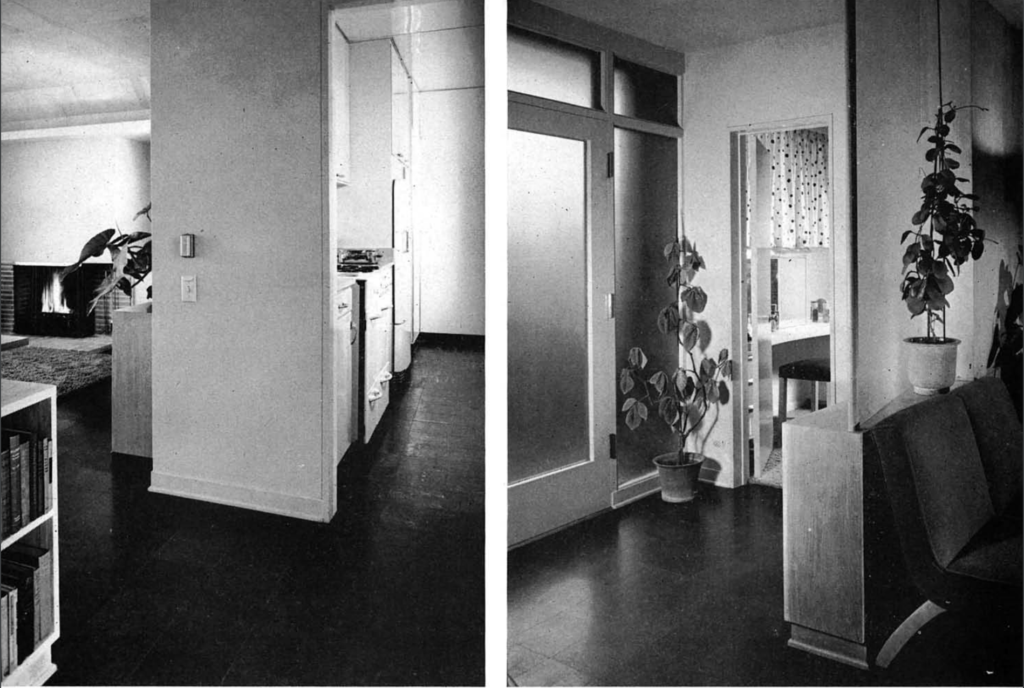
Furnishing for the majority of the interior and exterior was done by Van Keppel-Green. Not only was the circulation and flow of the home influenced by the architectural layout, but also by interior design schemes. “The dining and living room areas of the room are divided only by a red rose rug on the black asphalt tile floor.” This open layout allowed spaciousness, but red-rose chairs of similar tone in the dining area were used to visually connect the two areas.
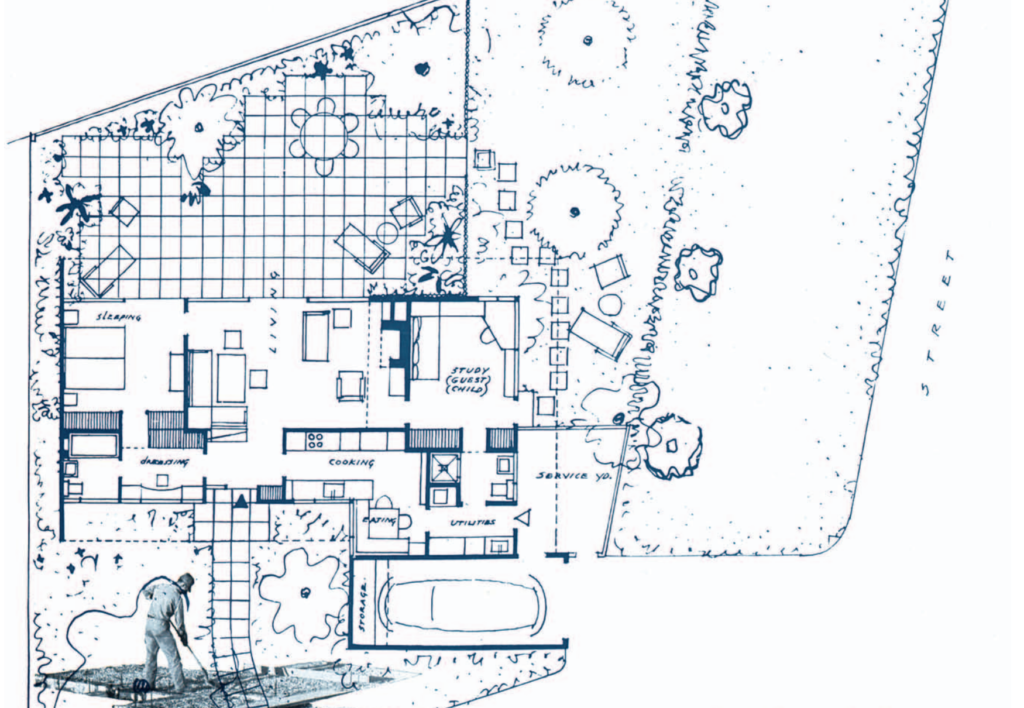
Though this home was modest, its compact design was well-planned and flexible, with special attention to ease of circulation and very clean lines. Expansive glass areas combined with dry-wall construction, radiant heating and other modern materials, keeping with the Case Study House principles.
Curious about other Case Study Houses? Find numbers 1-10 in our archives, working backwards from #10. And don’t forget to follow us on Instagram, Facebook and Pinterest for more mid century articles and ideas!

